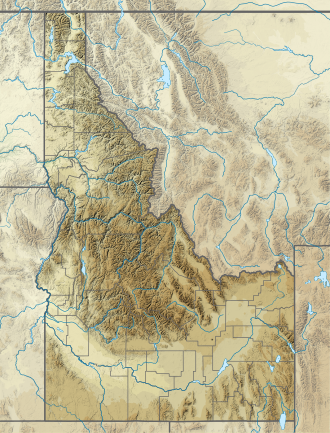| Owyhee Mountains | |
|---|---|
 Owyhee Mountains and Noble Horse Barn viewed from the east | |
| Highest point | |
| Peak | Hayden Peak [1] ,Owyhee County, Idaho |
| Elevation | 2,561 m (8,402 ft) |
| Dimensions | |
| Length | 40 mi (64 km)NNW-SSE |
| Geography | |
| Country | United States |
| State(s) | Idaho, and Oregon |
| District(s) | Owyhee County, Idaho and Malheur County, Oregon |
| Range coordinates | 42°58′51″N116°39′31″W / 42.98083°N 116.65861°W |
| Parent range | Owyhee Mountain Range |
| Topo map | USGS Cinnabar Mountain |

The Owyhee Mountains are a mountain range in Owyhee County, Idaho and Malheur County, Oregon. [2]
Mahogany Mountain and the associated volcanic craters of the Lake Owyhee volcanic field are in the Owyhee Mountains of Oregon just east of the Owyhee Reservoir on the Owyhee River. [3]
The southeastern end of the range including the old mining area west of Silver City is referred to as the Silver City Range. [4] About 8.3 kilometres (5.2 mi) west of Silver City is the De Lamar ghost town in Jordan Creek below the mine workings on De Lamar Mountain to the south. [4] The area was active in the late 1880s. In the 1970s mining began again with the development of open pit silver–gold mines on De Lamar Mountain. [5] [6]
